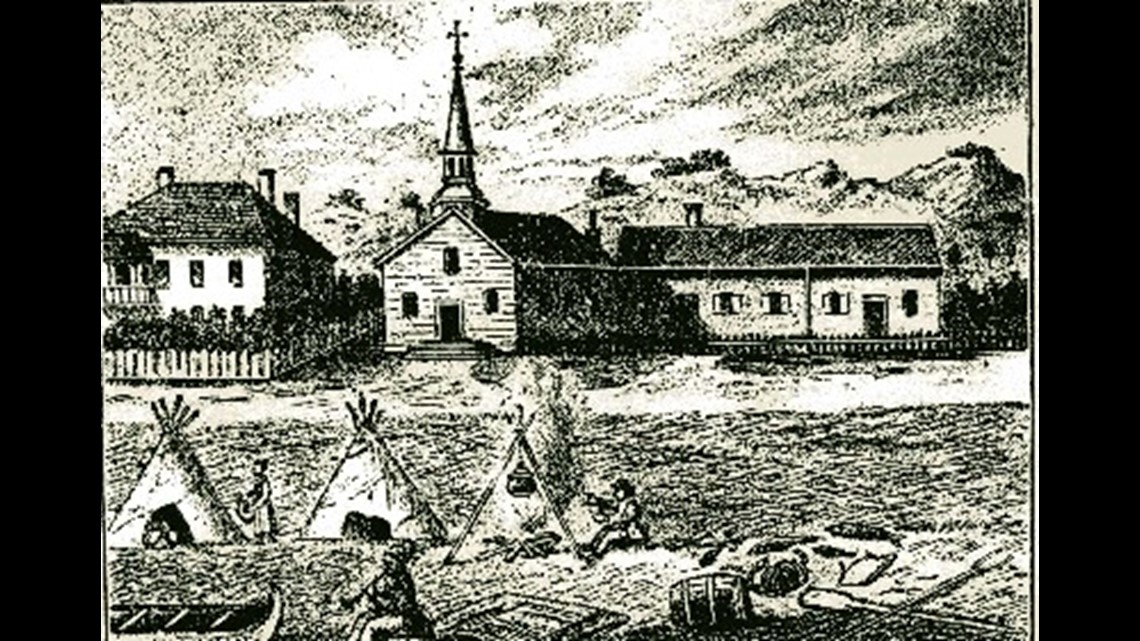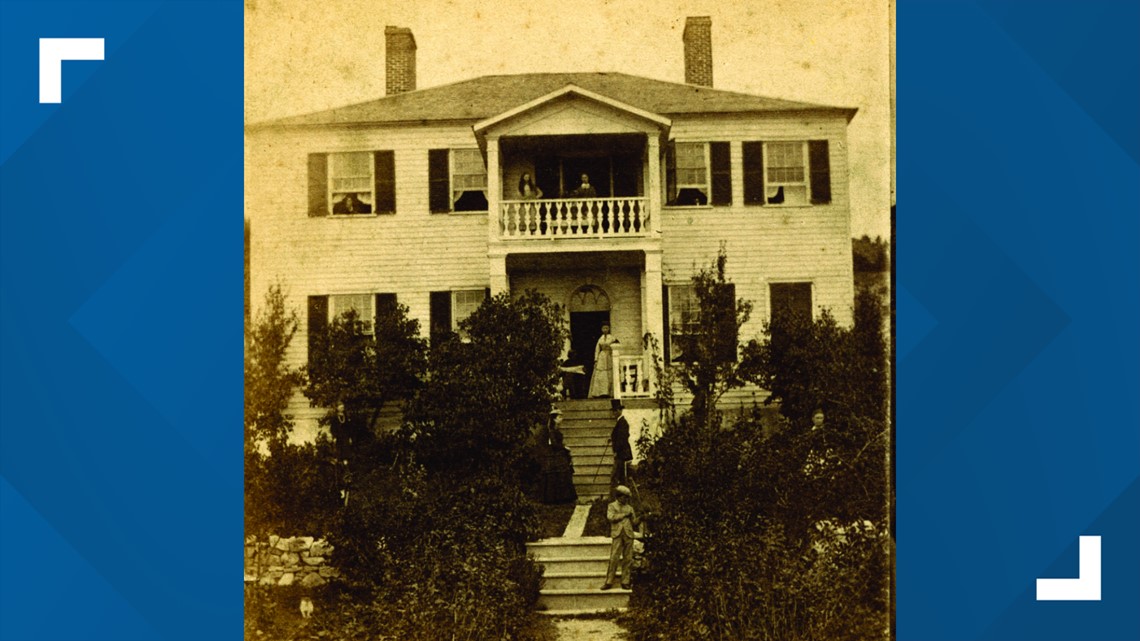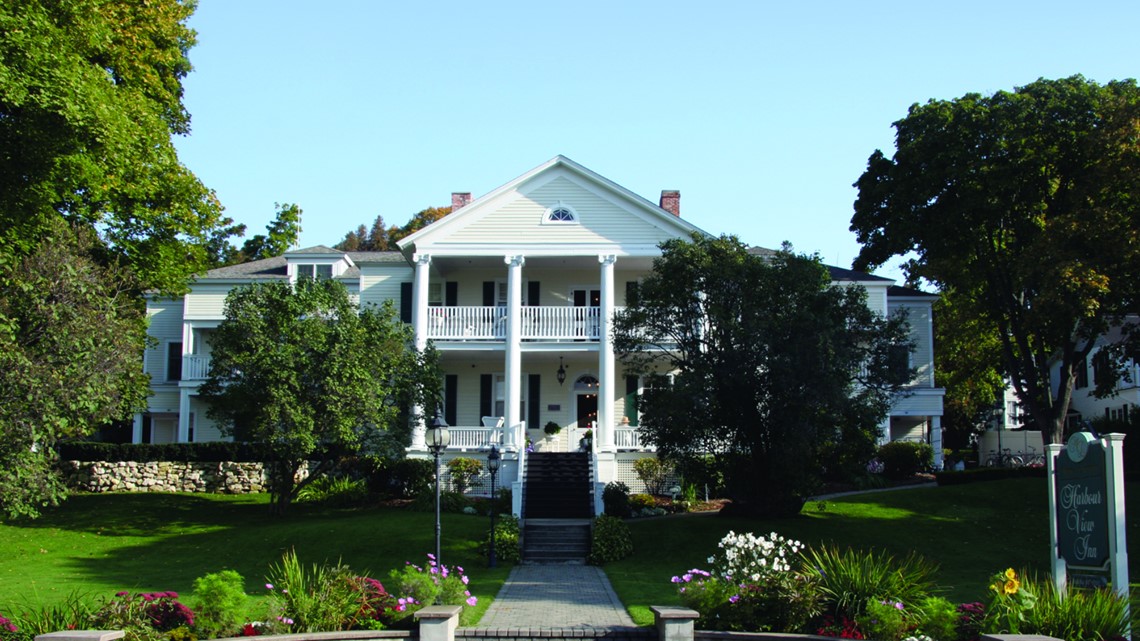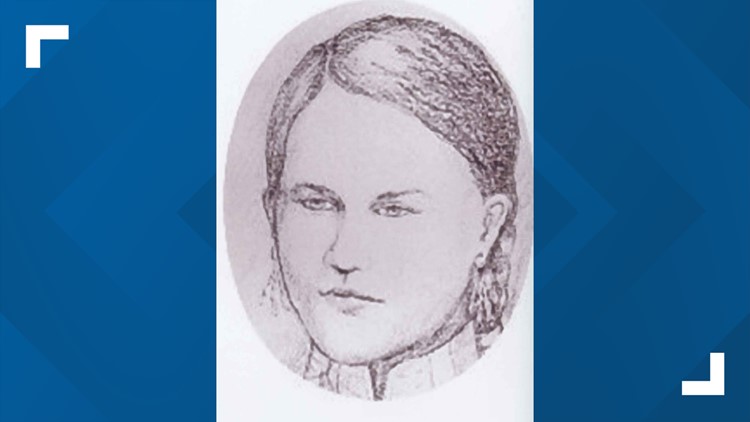MICHIGAN, USA — Before West Michigan was known for its craft breweries, its furniture factories and even its logging industry, it was a major hub for fur trading.
The trading of fur in West Michigan between its native peoples was around long before Europeans first arrived, but the region didn't become a major hub until French settlers arrived in the 1600s.
One of those French settlers would be the ancestor of Magdelaine La Framboise, who is thought to be Michigan's first woman business owner.
For this article on Magdelaine La Framboise, I reached out to the Director of the Mackinac State Historic Parks, Steve Brisson, the Education Curator & Volunteer Manager at the Tri-Cities Historical Museum, Erin Pilarski and the Assistant Education Curator at the Tri-Cities Historical Museum, Gabrielle Scott.
While speaking with Brisson, Pilarski and Scott, I learned that the historical record for Magdelaine La Framboise is incomplete and has many inconsistencies. But, this article was written using the most consistent pieces of information from many sources about Magdelaine.
Magdelaine La Framboise in West Michigan
Magdelaine La Framboise was born in 1780 and was the youngest of seven children. Her father was French fur trader Jean-Baptiste Marcot and her mother was Marie Neskech, a member of the Ottawa Tribe and the daughter of Chief Kewinoquot.
The location of Magdelaine's birth is unknown but is thought to have been at or near Fort St. Joseph near Niles, Michigan. Sometime after she was born, her family moved to a small village near the mouth of the Grand River near the modern-day city of Grand Haven.
From a very early age, Magdelaine had ties the fur trade in Michigan as her father was a prominent figure in the Northwest Fur Company. Magdelaine never knew her father well, however, because he passed away about three years after her birth.
Five of Magdelaine's siblings had received schooling at a French school in Montreal, but after her father's death, her mother could no longer afford sending the children abroad for an education. Instead, her mother decided to take her and her sister, Thérèse, to Mackinac Island, where they were both baptized at Ste. Anne's Church on the island. This began a long relationship that Magdelaine had with the church throughout her life.
Magdelaine's mother raised the two girls in Ottawa culture and she became fluent in Ottawa, French, English and the Ojibwa languages from an early age. She didn't learn to read or write until later in life, however.
After a few years on Mackinac Island, her mother decided to move back to the Grand Haven area and brought her daughters with her.
In 1794, when Magdelaine was a teenager, she married Joseph La Framboise, who was a fur trader like her father. The marriage was done in the Ottawa culture and it was later solemnized by a Catholic priest in 1804 at Ste. Anne's Church on Mackinac Island.


Together, Magdelaine and Joseph built a very successful fur trading business along the Grand River. Their fur trading business set up trading posts near modern-day Grand Haven and Lowell and even built the first mercantile building in West Michigan near Fallasburg Park in Lowell.
The fur trading business would take the couple all over the state, including annual trips to Mackinac Island in the summer to sell the furs collected in the winter.
Magdelaine and Joseph had two children, Josette born in 1795 and Joseph born in 1805. Josette would later marry Benjamin Pierce, the brother of Franklin Pierce, the 14th President of the United States.
Magdelaine La Framboise on her own
Shortly after their son was born, Magdelaine's husband Joseph was murdered. There is very little known about his death other than it was a murder that happened in 1806.
After Joseph's death, Magdelaine became the sole owner of their fur trading business and is thought to be the first woman business owner in Michigan.
Magdelaine continued to grow the fur trading business and was wildly successful, earning somewhere between $5,000 and $10,000 annually. The average income of a fur trade business owner at the time was only about $1,000 annually.
Her success was due to many factors, but her shrewd business sense is what helped her excel in the industry.
"One of the things she did that kind of separated her from other traders was she was an arbitrage trader... She would select low value first and rural areas, because obviously there's a higher population of animals, it's easy to trap them... and then would go travel to the city. And when she did that, she would pick up the low value goods that were manufactured in the city, sell the furs for a higher price, and then bring the goods back to the rural areas and sell over a higher price," said Assistant Education Curator at the Tri-Cities Historical Museum, Gabrielle Scott.
Magdelaine's knowledge of Native American culture and languages also helped her compete in an industry that was largely dominated by men.
Her biggest competitor was one of America's first monopolies, the American Fur Trading Company, owned by John Jacob Astor.
Astor seemed to respect Magdelaine and was rumored to have joked one year that he gave up trying to compete because she was just too good.
Magdelaine saw value in her relationship to Astor and would occasionally affiliate herself with his company after the War of 1812. At times, she worked directly for his company via a contract and get paid a set fee at the end of the season. At other times she would continue her business on her own.
When she began nearing the age of 40, her affiliation to Astor's American Fur Trading Company grew.
"They became affiliated together in the year 1818. And at the age of 41, in the year 1822, she ended up selling part of her Mackinac portion of the business to John Jacob Astor. And then Grand Haven's side, she sold the business to Rix Robinson, who was an independent for a trader," said Erin Pilarski, the Education Curator & Volunteer Manager at the Tri-Cities Historical Museum.
After selling her business off, Magdelaine retired and moved to Mackinac Island.
Magdelaine La Framboise on Mackinac Island
Magdelaine long had connections to Mackinac Island, having been baptized there as a child as well as conducting business on the island while running her fur trading company. So, it wasn't surprising that she chose to retire there after selling her fur trading business in 1822.
"They always came to the island in the in the summer, however, even from the time she was an infant, she was she was baptized at Ste. Anne's Church, on the island, and so on. So it's a common practice, winter fur trading activity elsewhere and coming to the great, you know, fur trade rendezvous basically on the island in the summer. So from infancy she had that summer island connection," said Steve Brisson, Director of the Mackinac State Historic Parks.
Magdelaine had a home constructed on the east end of town on Mackinac Island where she moved once she had retired.


While on the island, Magdelaine's philanthropic spirit began to shine as she took on several projects.
When Ste. Anne's Church was looking to relocate on the island, she donated a portion of her land adjacent to her home to the church, and a new Ste. Anne's Church was constructed there.
Magdelaine became known as "The First Lady of Mackinac Island" for her charitable work and the many visitors she welcomed into her home. She welcomed Governor Cass to her home and other traveling statesmen, military officers and writers to her home.
She is known for feeding the poor on the island and helping to establish a school for the church. She even helped support a Protestant mission that came to the island in the 1820s, despite being a devout Roman Catholic, because she valued education so highly. She continued her charitable efforts up until her death on April 4, 1846.
After her death, Magdelaine was laid to rest underneath Ste. Anne's Church at her request.
Magdelaine La Framboise's Legacy
The legacy of Magdelaine La Framboise is still evident on Mackinac Island. Her home still exists on the island and Ste. Ann's Church still sits beside her former residence.
"Her home still exists, survived through all those different iterations... from private home year round, to summer cottage, to now the hotel. But it's still her home, it's still there," said Brisson.


The original church building that Magdelaine sponsored in the 1820s was torn down in the 1870s and replaced with the current structure, but her grave was not impacted. Then, in the 1950s, Ste. Anne's added a basement and moved her remains to an above ground tomb beside the church before it was moved once again to beneath the church.


"Just a few years ago, the parish decided her wish had been to be beneath the church. So they moved her tomb back underneath the church so it can still be seen. It can now be seen inside the church today," Brisson added.
There are little other physical pieces from Magdeline's past in existence other than her home and the Church, but her legacy lives on in West Michigan, Mackinac Island and the state as a whole.
Learn more about Magdelaine La Framboise by visiting the Tri-Cities Historical Museum in Grand Haven or visiting her home and Ste. Anne's Church on Mackinac Island.
►Make it easy to keep up to date with more stories like this. Download the 13 ON YOUR SIDE app now.
Have a news tip? Email news@13onyourside.com, visit our Facebook page or Twitter. Subscribe to our YouTube channel.



